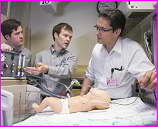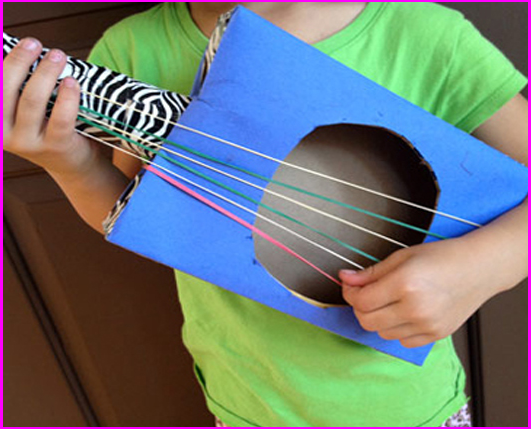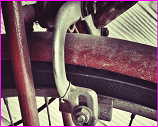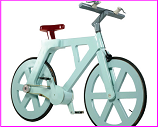Posted on May 31st, 2014 by Mary Lord
 Engineering undergraduates and graduate students do some pretty amazing things, such as developing an inexpensive neonatal ventilator for newborns in developing countries like these Brigham Young University engineering seniors (above) did. Learn about their projects, find scholarships and internships, and connect with other engineering students by subscribing to “The Accelerator,” ASEE’s free monthly e-newsletter and blog.
Engineering undergraduates and graduate students do some pretty amazing things, such as developing an inexpensive neonatal ventilator for newborns in developing countries like these Brigham Young University engineering seniors (above) did. Learn about their projects, find scholarships and internships, and connect with other engineering students by subscribing to “The Accelerator,” ASEE’s free monthly e-newsletter and blog.
Read More
Filed under: K-12 Outreach Programs, Special Features, Web Resources | Comments Off on The Accelerator: Resource for Engineering Students
Tags: Accelerator, ASEE, campus, engineering students, Internet Resources, Internships, scholarships, STEM education
Posted on May 31st, 2014 by Mary Lord
 NASA has a host of heavenly STEM offerings for students and teachers this summer. Check them out!
NASA has a host of heavenly STEM offerings for students and teachers this summer. Check them out!
Read More
Filed under: For Teachers, K-12 Outreach Programs, Special Features | Comments Off on NASA Summer STEM Fun
Tags: NASA, Outreach, Programs for Students, Resources for Teachers, Space
Posted on May 31st, 2014 by Mary Lord
 Summer is a great time to recharge, refresh, and learn new things. Check out eGFI’s collection of engineering education and STEM learning opportunities!
Summer is a great time to recharge, refresh, and learn new things. Check out eGFI’s collection of engineering education and STEM learning opportunities!
Read More
Filed under: Competitions and Contests, K-12 Outreach Programs, Web Resources | Comments Off on Summer STEM Learning
Tags: Competitions for Students, Conferences and Meetings, Education Policy, Internet Resources, Public Policy, Research on Learning, Resources for Teachers, STEM education, Summer Camps & Programs (Students)
Posted on May 30th, 2014 by Mary Lord
 Pairs of students in grades 3 – 5 investigate sound frequencies and acoustic engineering by creating four different instruments – a shoebox guitar, water-glass xylophone, straw panpipe, and soda bottle organ.
Pairs of students in grades 3 – 5 investigate sound frequencies and acoustic engineering by creating four different instruments – a shoebox guitar, water-glass xylophone, straw panpipe, and soda bottle organ.
Read More
Filed under: Class Activities, Grades K-5, Grades K-5, Lesson Plans | Comments Off on Simple Musical Instruments
Tags: acoustic engineering, build, Class Activities, Design, frequency, Grades K-5, guitar, hands-on activities, instrument, Music engineering, noise, sound, waves, xylophone
Posted on May 20th, 2014 by Mary Lord
 In this activity, students in grades 3 to 6 learn about force and friction by examining how basic rim bicycle brakes work and discussing the advantages of various designs. They then use low cost materials to devise a simple braking system, suggest improvements to current bicycle brake designs, and present their recommended changes to the class.
In this activity, students in grades 3 to 6 learn about force and friction by examining how basic rim bicycle brakes work and discussing the advantages of various designs. They then use low cost materials to devise a simple braking system, suggest improvements to current bicycle brake designs, and present their recommended changes to the class.
Read More
Filed under: Class Activities, Grades 6-8, Grades 6-8, Grades K-5, Grades K-5 | Comments Off on Give Me a Brake!
Tags: bicycle, Class Activities, Design, Energy, Engineering Design, friction, gears, Grades 6-8, Grades K-5, Lesson Plan, motions and forces
Posted on May 19th, 2014 by Mary Lord
 Izhar Gafni’s eureka moment came a few years ago when he heard about a cardboard canoe and wondered: “Why not a cardboard bicycle?” It took several years of trial-and-error work before he succeeded in building a reliable model that weighs a mere 20 pounds, is stronger than carbon fiber, and costs only about $10 to make.
Izhar Gafni’s eureka moment came a few years ago when he heard about a cardboard canoe and wondered: “Why not a cardboard bicycle?” It took several years of trial-and-error work before he succeeded in building a reliable model that weighs a mere 20 pounds, is stronger than carbon fiber, and costs only about $10 to make.
Read More
Filed under: Special Features | Comments Off on Cardboard Pedal Pusher
Tags: cardboard bicycle, entrepreneur, Green Technology, Ideas & Inventions, Materials Engineering, Sustainability, Systems Engineering, Transportation
 Engineering undergraduates and graduate students do some pretty amazing things, such as developing an inexpensive neonatal ventilator for newborns in developing countries like these Brigham Young University engineering seniors (above) did. Learn about their projects, find scholarships and internships, and connect with other engineering students by subscribing to “The Accelerator,” ASEE’s free monthly e-newsletter and blog.
Engineering undergraduates and graduate students do some pretty amazing things, such as developing an inexpensive neonatal ventilator for newborns in developing countries like these Brigham Young University engineering seniors (above) did. Learn about their projects, find scholarships and internships, and connect with other engineering students by subscribing to “The Accelerator,” ASEE’s free monthly e-newsletter and blog. 








 NASA has a host of heavenly STEM offerings for students and teachers this summer. Check them out!
NASA has a host of heavenly STEM offerings for students and teachers this summer. Check them out! Summer is a great time to recharge, refresh, and learn new things. Check out eGFI’s collection of engineering education and STEM learning opportunities!
Summer is a great time to recharge, refresh, and learn new things. Check out eGFI’s collection of engineering education and STEM learning opportunities! Pairs of students in grades 3 – 5 investigate sound frequencies and acoustic engineering by creating four different instruments – a shoebox guitar, water-glass xylophone, straw panpipe, and soda bottle organ.
Pairs of students in grades 3 – 5 investigate sound frequencies and acoustic engineering by creating four different instruments – a shoebox guitar, water-glass xylophone, straw panpipe, and soda bottle organ.  In this activity, students in grades 3 to 6 learn about force and friction by examining how basic rim bicycle brakes work and discussing the advantages of various designs. They then use low cost materials to devise a simple braking system, suggest improvements to current bicycle brake designs, and present their recommended changes to the class.
In this activity, students in grades 3 to 6 learn about force and friction by examining how basic rim bicycle brakes work and discussing the advantages of various designs. They then use low cost materials to devise a simple braking system, suggest improvements to current bicycle brake designs, and present their recommended changes to the class. Izhar Gafni’s eureka moment came a few years ago when he heard about a cardboard canoe and wondered: “Why not a cardboard bicycle?” It took several years of trial-and-error work before he succeeded in building a reliable model that weighs a mere 20 pounds, is stronger than carbon fiber, and costs only about $10 to make.
Izhar Gafni’s eureka moment came a few years ago when he heard about a cardboard canoe and wondered: “Why not a cardboard bicycle?” It took several years of trial-and-error work before he succeeded in building a reliable model that weighs a mere 20 pounds, is stronger than carbon fiber, and costs only about $10 to make.